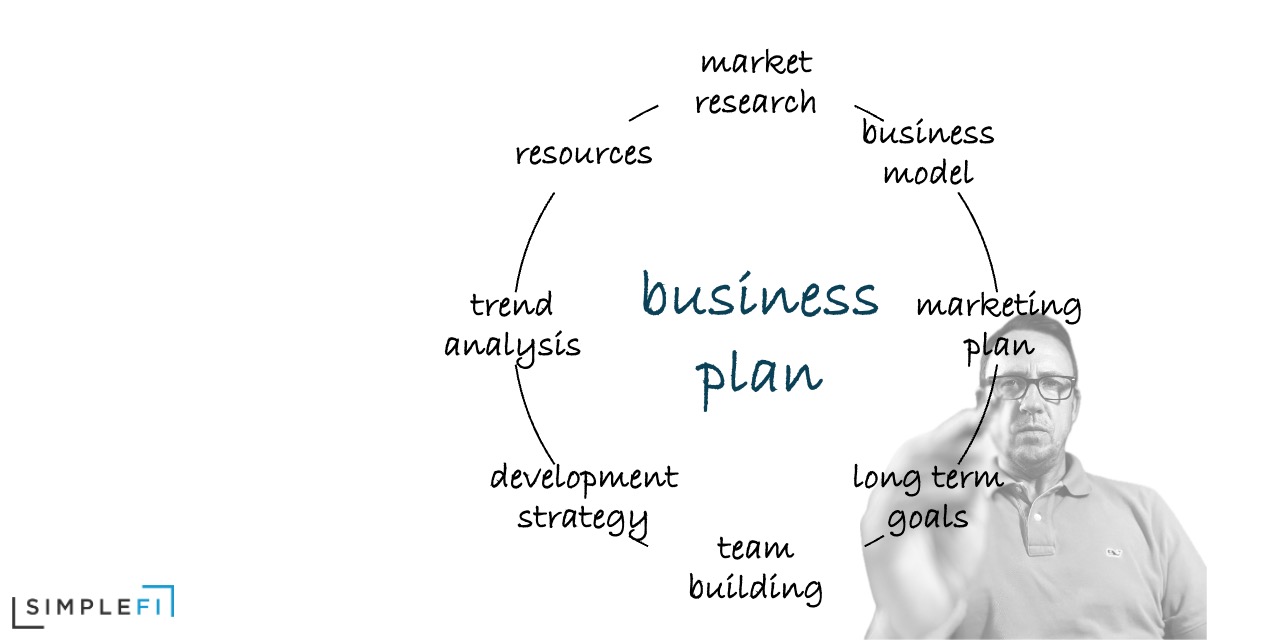September 11th, 2024
Jason Reid
Extended Planning or XP&A has been a part of the BTP vernacular for several years. Over the past few months, we have been seeing the term “Seamless Planning” appear in some of the SAP BTP presentations and demonstrations. What is the definition and vision of SAP’s “Seamless” planning? Is it an extension of XP&A?
If you google seamless planning without any additional qualifiers the results return a lot of categories of information and concepts but no agreed upon consensus within the FP&A community. If you put SAP as a qualifier, the results, of course, begin to bring back many specific planning ideas and links. They include ERP production, maintenance planning, extended planning and a myriad of products. Seamless Planning is clearly new terminology specific to SAP and their vision but what does it mean? Is it all marketing? The adoption of this terminology and definition of it is not yet clear, but I aim to share with you some of the vision in this blog, and what it could be for the future of your organization and roadmap in 2024 and beyond. In this blog I will look to add my own perspective on what I believe is a powerful message. I spent 17 years in the SAP Budgeting, Forecasting, and Planning ecosystem. This updated messaging and product roadmap is very exciting to see.
While I am sure the specific marketing terms will not be the same as I am presenting, I think the general message will be close.
In this blog I will be speaking about SAC, PaPM, S4, and Datasphere as integral parts of the seamless planning vision.
Seamless Planning with SAP
The word seamless, used in the context of planning and budgeting, is not new. SAP has always positioned seamless planning as a means for organizations to embed all their planning processes (tools) into their data warehouse that can centrally manage and control each application and share data / dimensionality. In addition, it allows for additional layers of customization and performance optimization for organizations with more complex requirements / needs.
Many SAP customers are already engaged in an implementation strategy to link planning from different departments into an orderly set of models and processes that share information between finance, HR and operations. This has been the core of the XP&A messaging.
We are all subjects of our perspective and for me the anchor of seamless planning is SAP Analytics Cloud for Planning. I say anchor, it doesn’t constitute the biggest part of the bill of materials, or even address some of the biggest challenges, but it does focus on the overall planning strategy.
Game Plan
Figure 1 represents some of our existing customers’ game plan to remove the many planning silos that still exist…and yes Excel is still everywhere. Our customers are moving all their planning departments under SAP Analytics Cloud for Planning. The ability to share master data, dimensions, planning processes and collaborate on a single solution has reduced many of the challenges prevalent in many organizations. While this has already been a part of the XP&A strategy it still constitutes an important part of the seamless planning process.
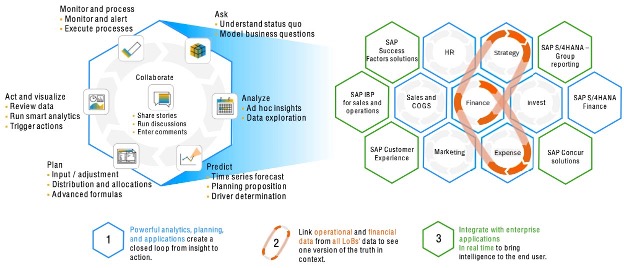
Connecting departmental planning processes creates an alignment that even today is not readily recognized.
So, let’s say we connect planning in multiple departments, what’s next? In the above example, we can still support the opportunities through SAP Analytics Cloud for Planning implementation strategies. It even gives us opportunities to synchronize integration with BPC or other planning systems.
But what happens when we want to expand planning into profitability analysis? In many cases the size of data sets and records begin to challenge SAP Analytics Cloud or even S4 for that matter.
Profitability and Performance Management (PaPM)
In comes PaPM. This product is essentially a calculation powerhouse that helps address those specific situations around high-volume calculations.
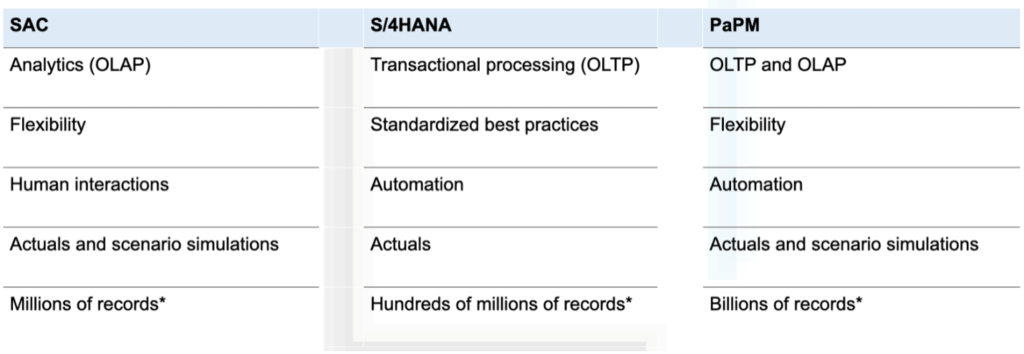
The use cases are varied and beyond the scope of this blog. Most of my personal experience with PaPM was with Profitability Analysis. However, SAP customers have used PaPM for Cost Management and Activity-based costing, Risk and Compliance Management, Transfer Pricing and many others. When speaking to customers about specific applications I often use the following chart to start the discussion.
SAP S/4 HANA
From an SAP BTP perspective any Seamless Planning discussion will include connecting to the general ledger system. Again, we can speak to many use cases but fundamentally customers need actuals to support the planning process. Actuals and planning variance analysis and the need to drill into the detailed transactions in S4, that we don’t want to store the same level of granularity in SAC, is a key planning requirement.
In comes the integration of SAC and S4 that provides this capability.
The very tight integration between S4 and SAC makes this a key part of the seamless planning equation.
SAP Datasphere (DSP)
I think Datasphere constitutes one of the biggest advancements in the SAP seamless planning vision.
There’s no surprise in saying that data management, cleansing, single source of the truth, and master data management still represent significant challenges for our customers.
Datasphere and SAC integration will come in 2 major phases. A controlled release in Q4 of 2024 and a GA release in 2025.
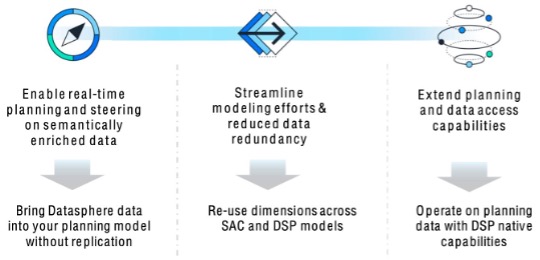
When speaking to our SimpleFi customers I present that Datasphere and SAC use cases should be under investigation now.
It is SAP’s vision that all BTP products run within Datasphere. Not at the cost of being independent solutions but as a platform to improve addressing the question of what should happen.
While Datasphere as a Datawarehouse solution is already a part of SAP’s product list, it is still undergoing enhancements. The goal is to realize its true seamless planning potential.
Generative Artificial Intelligence (AI)
Artificial Intelligence (AI) has been a part of our cultural taxonomy for many years. Over the past few years, it has become ever more available. Generative AI is a different beast. It is really a subset of AI that is more about packaging content that is learned from data. We only have to look at ChatGPT to see how AI can wrap answers about textual questions we supply it.
A few years ago, SAP announced they were a Cloud company…and a cloud company they became. The same approach is being applied to Generative AI. SAP will become an AI company and they will use AI to help drive the seamless planning vision.
This is very prevalent in how they are applying generative AI to SAC alone. From the early stages of Just Ask to the latest release of SAP Joule we can see the fast advance in AI.

The Big Picture
I could continue to represent how specific use cases, existing solutions, and new technology are aligning towards a seamless planning vision. I think now is the best time to look at the bigger picture.
The first part of this, Figure 5 below, is where our customers are already building a base from which to expand into a more robust seamless planning ecosystem.
Integration has helped build out from SAC as an anchor and today we see customers doing S4 Actuals integration with SAC. While this is mostly a reporting exercise, it is a crucial part of the vision.

As we add Datasphere and generative AI to the mix we really do see the seamless planning vision emerging.
A seamless planning vision is fundamentally about moving the planning process from “what just happened” through to “why did it happen” to “what could happen” to “what should happen”.
One of my former BTP Global CoE colleagues created the following diagram. I think it does a wonderful job of defining a vision.
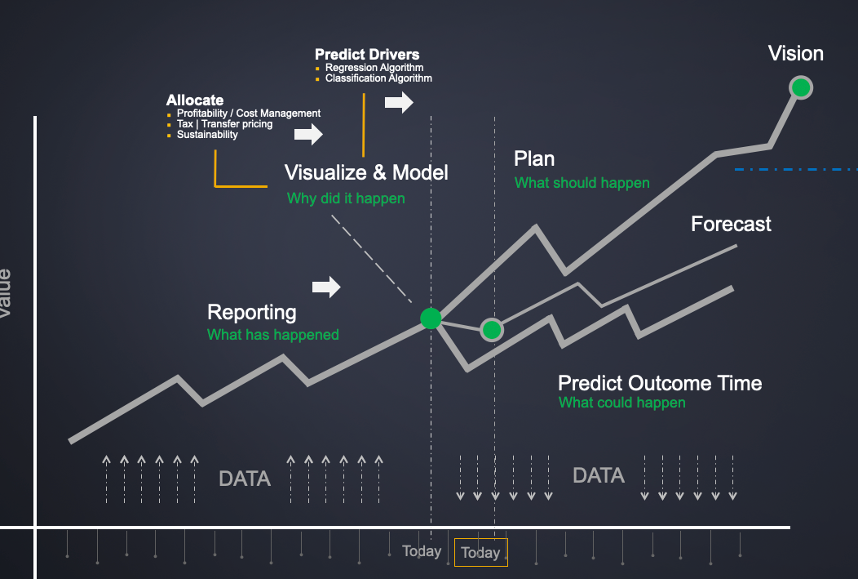
The SAP BTP Product landscape is continually evolving but this most recent vision based on Seamless Planning is a powerful platform. To accomplish this SAP has put together a strong combination of products.
Summary
This combination of products and their integration planning allows organizations to embed all their planning processes into their data warehouse that can centrally manage and control each application and share data / dimensionality. In addition, it allows for additional layers of customization and performance optimization for organizations with more complex requirements / needs
From SAC to S4, to PaPM, to Datasphere, to Generative AI. These products, their specific capabilities and interrelated use cases will make for a very interesting 2025 and beyond.
Jason Reid
Jason is SimpleFi’s Senior Director of Customer Success who joined us from SAP’s Global Center of Excellence this summer, where he was responsible for Planning & Analytics related topics.


